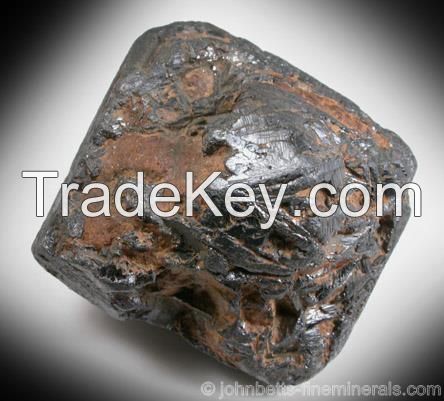详情
Rutile comes in a surprising contrast of distinct habits and
colors, making it a very interesting mineral. It has multiple
unique crystal forms as well as several telltale colors, styles,
and associations. Rutile can range from mirror-like
metallic-looking crystals, to dark reddish sub-metallic crystals,
to bright golden-yellow needles. Even the opaque metallic-looking
forms are somewhat translucent on edge under backlighting, with a
dark red translucent tinge.
Rutile is well known for its habit of forming needle-like
inclusions within other minerals, especially Quartz, in the form of
long and slender yellow straw-like crystals. These inclusions can
range from scattered needles to dense parallel fibers within a host
mineral. This combination is known as Rutilated Quartz, and is used
both as a collectors mineral and gemstone.
Rutile inclusions are also responsible for the asterism or
chatoyancy effects on some gemstones, such as Star Sapphire. The
thin, parallel Rutile fibers that formed within the host mineral
provide these unique optical effects.
Rutile is the most common mineral composed of titanium dioxide.
Rarer polymorphs include Brookite and Anatase, both which also form
unique and distinctive crystals. The name Rutile is derived from
the Latin "Rutilus", in reference to a common color habit of this
mineral in dark red but lustrous crystals.
